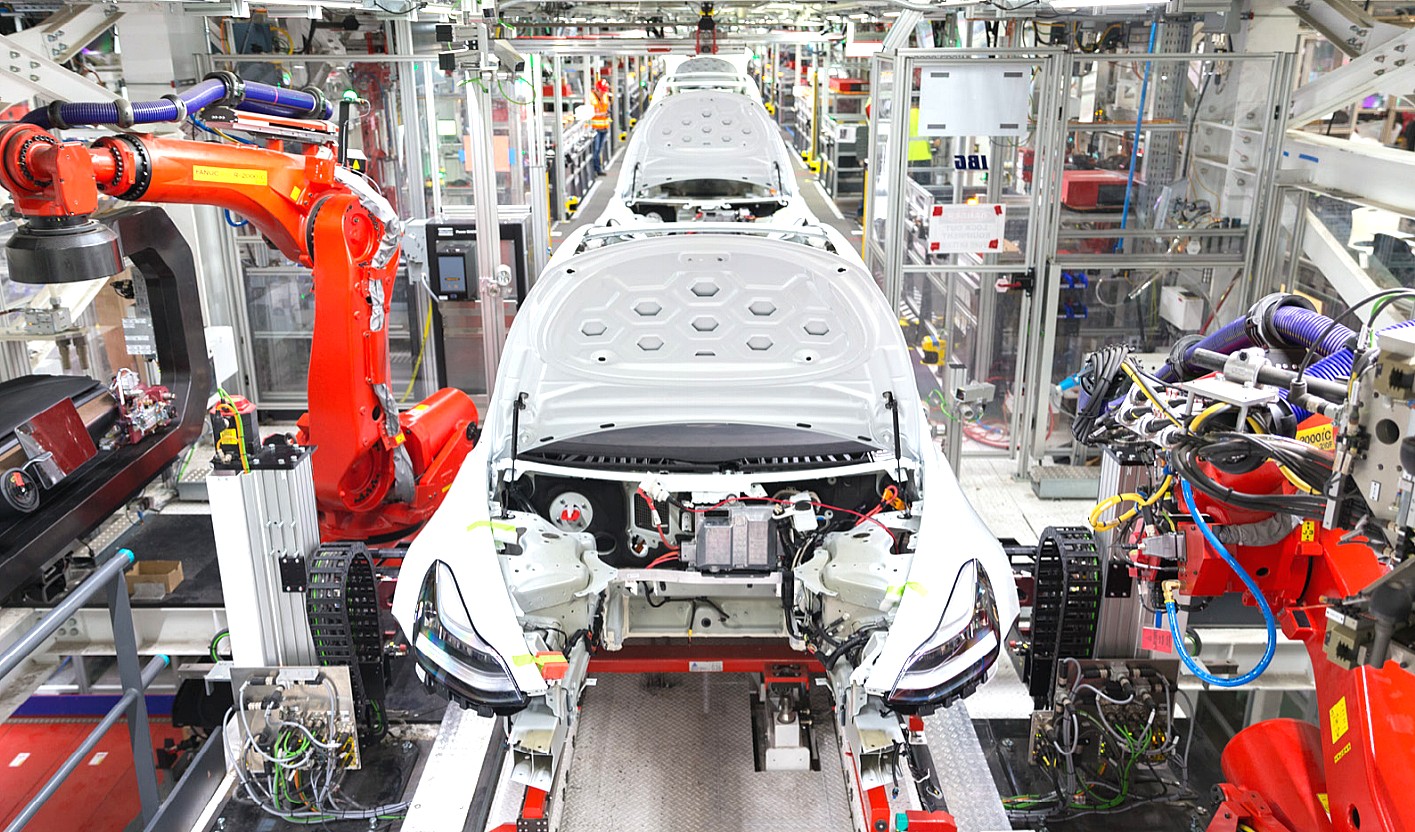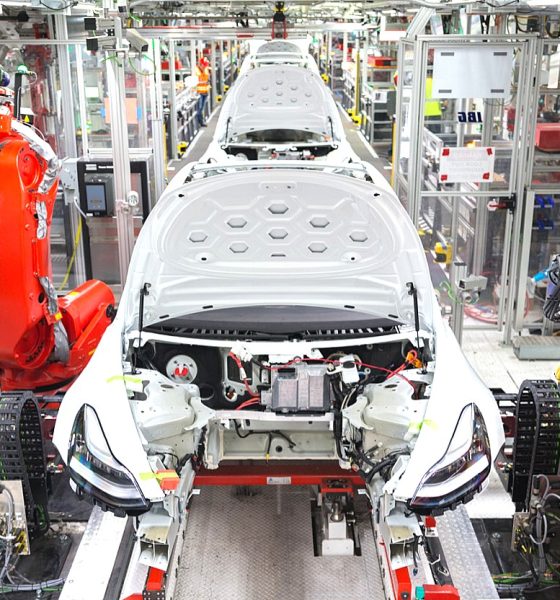

Investor's Corner
Tesla’s 2021 delivery guidance pushes new heights as Q1 Earnings Call approaches
Tesla’s (NASDAQ: TSLA) delivery guidance is increasing and bulls are becoming more convinced of a record 2021 following impressive Q1 2021 delivery and production figures. As the Q1 2021 Earnings Call is set to take off in just a few hours, bulls like Dan Ives of Wedbush, are putting in their last predictions for the call along with some revised guidance figures for the year as a whole.
Ives, a notable Tesla bull who has remained optimistic regarding the company’s full-year delivery guidance, is beginning to suspect that Tesla could surpass the initial projections that analysts have set for the automaker this year. Consensus estimates were around 800,000 deliveries for the year. However, Tesla announced in early April that it had successfully delivered 184,800 vehicles.
While that sounds low considering the full-year guidance would require at least 200,000 cars per quarter, Tesla accomplished this feat by delivering only two of its four available models: the Model 3 and Model Y made their way to customers in substantial figures. Meanwhile, the Model S and Model X “refresh” projects are being refined and are moving forward at a pace that isn’t necessarily what Tesla expected. However, the company may have wanted a few things revised with the two flagship vehicles, and the new design required a retooling of production lines at the Fremont factory where the cars are manufactured.
“I believe we could be starting to go towards 900,000,” says @DivesTech on $TSLA delivery numbers tonight. “I ultimately think this is just the next step in the stock going to $1,000 … we believe China, that’s the linchpin of their success.” pic.twitter.com/yo7er0otx9
— Squawk Box (@SquawkCNBC) April 26, 2021
With that being said, the Model S and Model X, while not incredibly important to Tesla’s overall growth, are still contributors to the company’s production and delivery figures. The absence of the two vehicles certainly sparked “what ifs” in the minds of Tesla investors. Demand seems to be relatively stable for the two cars with the new design. That, along with two new production facilities that have planned launch dates in 2021, is a contributing factor to some analysts revising their full-year guidance.
“Before, the line in the sand was really 800,000,” Ives said on Squawk Box earlier today. “Now, despite all of the skeptics, competition, chip shortage issues, I believe that we could now be starting to go toward 900,000.”
Tesla had its fair share of issues in Q1, and it still didn’t halt the momentum the company held at the tail end of 2020. As Ives mentioned, chip shortages, skeptical analysts, and increased competition did not keep Tesla from reporting a huge quarter in terms of delivery and production. With that being said, Tesla undoubtedly will encounter some bottlenecks throughout 2021 that are just unexpected events. Tesla’s response to what it encountered in Q1 was remarkable, and the automaker has plenty of evidence to back up claims that it will deliver closer to 900,000 cars in 2021.
“I ultimately think this is just the next step in the stock going toward $1,000,” Ives added.
Wall Street currently expects Tesla to report non-GAAP earnings per share (EPS) of $0.79 during the Q1 2021 Earnings Call that will take place later this evening. Additionally, Wall Street expects Tesla to report revenue of $10.29 billion.
Tesla’s first-quarter earnings call will be held tonight, Monday, April 26th, 2021, at 2:30 pm Pacific Time or 5:30 pm Eastern Time.
Disclosure: Joey Klender is a TSLA Shareholder.

Investor's Corner
Tesla stock closes at all-time high on heels of Robotaxi progress

Tesla stock (NASDAQ: TSLA) closed at an all-time high on Tuesday, jumping over 3 percent during the day and finishing at $489.88.
The price beats the previous record close, which was $479.86.
Shares have had a crazy year, dipping more than 40 percent from the start of the year. The stock then started to recover once again around late April, when its price started to climb back up from the low $200 level.
This week, Tesla started to climb toward its highest levels ever, as it was revealed on Sunday that the company was testing driverless Robotaxis in Austin. The spike in value pushed the company’s valuation to $1.63 trillion.
Tesla Robotaxi goes driverless as Musk confirms Safety Monitor removal testing
It is the seventh-most valuable company on the market currently, trailing Nvidia, Apple, Alphabet (Google), Microsoft, Amazon, and Meta.
Shares closed up $14.57 today, up over 3 percent.
The stock has gone through a lot this year, as previously mentioned. Shares tumbled in Q1 due to CEO Elon Musk’s involvement with the Department of Government Efficiency (DOGE), which pulled his attention away from his companies and left a major overhang on their valuations.
However, things started to rebound halfway through the year, and as the government started to phase out the $7,500 tax credit, demand spiked as consumers tried to take advantage of it.
Q3 deliveries were the highest in company history, and Tesla responded to the loss of the tax credit with the launch of the Model 3 and Model Y Standard.
Additionally, analysts have announced high expectations this week for the company on Wall Street as Robotaxi continues to be the focus. With autonomy within Tesla’s sights, things are moving in the direction of Robotaxi being a major catalyst for growth on the Street in the coming year.
Elon Musk
Tesla needs to come through on this one Robotaxi metric, analyst says
“We think the key focus from here will be how fast Tesla can scale driverless operations (including if Tesla’s approach to software/hardware allows it to scale significantly faster than competitors, as the company has argued), and on profitability.”

Tesla needs to come through on this one Robotaxi metric, Mark Delaney of Goldman Sachs says.
Tesla is in the process of rolling out its Robotaxi platform to areas outside of Austin and the California Bay Area. It has plans to launch in five additional cities, including Houston, Dallas, Miami, Las Vegas, and Phoenix.
However, the company’s expansion is not what the focus needs to be, according to Delaney. It’s the speed of deployment.
The analyst said:
“We think the key focus from here will be how fast Tesla can scale driverless operations (including if Tesla’s approach to software/hardware allows it to scale significantly faster than competitors, as the company has argued), and on profitability.”
Profitability will come as the Robotaxi fleet expands. Making that money will be dependent on when Tesla can initiate rides in more areas, giving more customers access to the program.
There are some additional things that the company needs to make happen ahead of the major Robotaxi expansion, one of those things is launching driverless rides in Austin, the first city in which it launched the program.
This week, Tesla started testing driverless Robotaxi rides in Austin, as two different Model Y units were spotted with no occupants, a huge step in the company’s plans for the ride-sharing platform.
Tesla Robotaxi goes driverless as Musk confirms Safety Monitor removal testing
CEO Elon Musk has been hoping to remove Safety Monitors from Robotaxis in Austin for several months, first mentioning the plan to have them out by the end of 2025 in September. He confirmed on Sunday that Tesla had officially removed vehicle occupants and started testing truly unsupervised rides.
Although Safety Monitors in Austin have been sitting in the passenger’s seat, they have still had the ability to override things in case of an emergency. After all, the ultimate goal was safety and avoiding any accidents or injuries.
Goldman Sachs reiterated its ‘Neutral’ rating and its $400 price target. Delaney said, “Tesla is making progress with its autonomous technology,” and recent developments make it evident that this is true.
Investor's Corner
Tesla gets bold Robotaxi prediction from Wall Street firm
Last week, Andrew Percoco took over Tesla analysis for Morgan Stanley from Adam Jonas, who covered the stock for years. Percoco seems to be less optimistic and bullish on Tesla shares, while still being fair and balanced in his analysis.

Tesla (NASDAQ: TSLA) received a bold Robotaxi prediction from Morgan Stanley, which anticipates a dramatic increase in the size of the company’s autonomous ride-hailing suite in the coming years.
Last week, Andrew Percoco took over Tesla analysis for Morgan Stanley from Adam Jonas, who covered the stock for years. Percoco seems to be less optimistic and bullish on Tesla shares, while still being fair and balanced in his analysis.
Percoco dug into the Robotaxi fleet and its expansion in the coming years in his latest note, released on Tuesday. The firm expects Tesla to increase the Robotaxi fleet size to 1,000 vehicles in 2026. However, that’s small-scale compared to what they expect from Tesla in a decade.
Tesla expands Robotaxi app access once again, this time on a global scale
By 2035, Morgan Stanley believes there will be one million Robotaxis on the road across multiple cities, a major jump and a considerable fleet size. We assume this means the fleet of vehicles Tesla will operate internally, and not including passenger-owned vehicles that could be added through software updates.
He also listed three specific catalysts that investors should pay attention to, as these will represent the company being on track to achieve its Robotaxi dreams:
- Opening Robotaxi to the public without a Safety Monitor. Timing is unclear, but it appears that Tesla is getting closer by the day.
- Improvement in safety metrics without the Safety Monitor. Tesla’s ability to improve its safety metrics as it scales miles driven without the Safety Monitor is imperative as it looks to scale in new states and cities in 2026.
- Cybercab start of production, targeted for April 2026. Tesla’s Cybercab is a purpose-built vehicle (no steering wheel or pedals, only two seats) that is expected to be produced through its state-of-the-art unboxed manufacturing process, offering further cost reductions and thus accelerating adoption over time.
Robotaxi stands to be one of Tesla’s most significant revenue contributors, especially as the company plans to continue expanding its ride-hailing service across the world in the coming years.
Its current deployment strategy is controlled and conservative to avoid any drastic and potentially program-ruining incidents.
So far, the program, which is active in Austin and the California Bay Area, has been widely successful.








